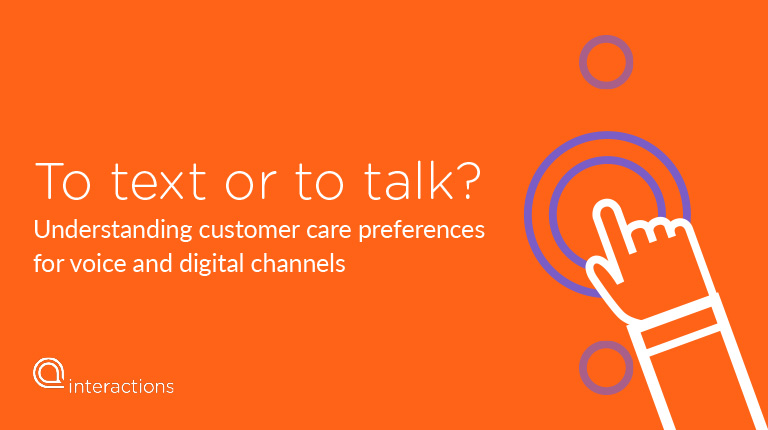Last week on our podcast, host Jim Freeze and Susse Jensen, Senior Experience Designer at Adobe, discussed voice design and how businesses can intelligently design voice interface to result in intuitive, effective customer experiences. However, before looking at how voice can be designed to support your customers and their experiences with your brand, it’s important to look at why companies should continue to use voice in a seemingly digital-first world.
Humans can speak three to four times faster than they can type.
While texting and chat may seem like all the craze, a well-designed voice platform can actually assist customers faster and with less effort. Currently, customers are split when it comes to which method they prefer. Fifty-one percent prefer texting or typing, while 49% prefer voice channels when communicating with a company according to Harris Poll. By breaking it down further, we can see that Millenials are more likely to prefer texting and typing, at 67%.
A possible reason for this is because voice design has previously not been a focus of companies. When the word “design” comes to mind, often people only think of visual channels. How is the website user experience? How is the chatbot user experience? But with more attention to voice design, more positive experience with voice channels could influence many to change their tune.
“I’m hoping that we can build better experiences with voice and really take advantage of what it is good for, like freeing your eyes up and freeing your hands away from your device and sort of like giving you a little more freedom to focus on other things and don’t necessarily be tied with your eyes locked to a screen or with your hands locked to your keyboard,” said Susse Jensen.
If you’re interested in hearing more about voice design and the ways that it can impact communication between brands and their customers, listen to the latest episode of our podcast, The ConversAItion, here.
What are some other ways to direct customers to voice channels?
Thirty-nine percent of respondents from Harris Poll cited that the reason they used texting and typing over voice channels is to avoid wait times. This is often caused by too many people calling, and/or too few agents available to assist. A popular fix to this problem is to introduce a Conversational AI applicatio to allow customers to perform simple tasks. This frees up agents to help the customers that need their attention, which reduces wait times for all customers.
Another reason that customers often shy away from using a voice channel is that contact centers use outdated automated technology that is actually meant to deflect or contain conversations, rather than to resolve issues. In an attempt to solve the previous problem of reducing wait times, these automated systems, like IVRs, are not advanced enough to truly assist customers, resulting in customers again waiting in a queue to speak with a live agent.
Last but not least, once there are measures in place with effective voice design and an advanced Conversational AI application, companies must educate their customers on the ease of voice. We live in a world with so many businesses. If a customer has a bad experience with a voice channel at one company, they may be turned off from the channel across the board. Customer experience is a key differentiator against the competition, and businesses must inform their customer base of their value in this space.





